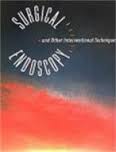 Three-year follow up data from the TEMPO randomized controlled trial supports evidence of TIF procedure as an effective, long-term treatment option for GERD
Three-year follow up data from the TEMPO randomized controlled trial supports evidence of TIF procedure as an effective, long-term treatment option for GERD
REDMOND, Washington – EndoGastric Solutions® (EGS), a leader in incisionless procedural therapy for gastroesophageal reflux disease (GERD), today announced that Surgical Endoscopy has published positive three-year follow up data from TIF® EsophyX vs Medical PPI Open Label (TEMPO), a prospective, randomized, multicenter clinical study, demonstrating long-term control of chronic GERD after a Transoral Incisionless Fundoplication (TIF) procedure with the EsophyX® device.
The study evaluated the enduring effects of the TIF 2.0 procedure in 63 patients suffering from chronic GERD symptoms. Patients were randomly assigned to undergo the TIF procedure using the EsophyX device (n=40) or to receive high-dose proton-pump inhibitor (PPI) therapy (n=23). Six months after the start of the study, all patients from the PPI control group crossed over and received the TIF procedure.
The three-year results are the longest follow-up data from a randomized controlled clinical trial available. Overall, the study met the primary endpoint, with 83 percent of patients undergoing the TIF procedure experiencing elimination of regurgitation and all atypical GERD symptoms at three-years post-procedure. The study also met the secondary endpoints, with 70 percent of patients reporting discontinuation of PPI therapy and 87 percent of patients experiencing healing of reflux esophagitis at the 36-month follow-up.
“Our clinical data demonstrates the ability of the transoral incisionless fundoplication to sustain benefits up to three years’ post-procedure, providing physicians with an effective treatment option to improve long-term patient outcomes. The results of this study have confirmed that the endoscopic TIF 2.0 procedure is a durable alternative to PPIs and more invasive anti-reflux surgery operations,” said Karim Trad, MD, Clinical Professor of Surgery at George Washington University School of Medicine and principal investigator.
“We are pleased to have the three-year TEMPO data published in Surgical Endoscopy, adding to the existing clinical evidence that supports the TIF 2.0 procedure as a durable treatment option for patients who no longer benefit from PPI therapy and are seeking lasting relief from chronic GERD symptoms,” said Skip Baldino, President and CEO of EndoGastric Solutions. “This data offers even more support for our active work to establish positive insurance coverage policies and appropriate payment levels for the TIF procedure with providers and payers.”
With the support of leading gastroenterological and surgical clinical societies, top commercial health insurer, Health Care Service Corporation (HCSC), issued a medical coverage policy for the TIF procedure with the EsophyX® device, making the procedure available to the network’s approximate 15 million members of Blue Cross/Blue Shield of Illinois, Montana, New Mexico, Oklahoma and Texas. HCSC’s coverage policy went into effect July 15, 2016 and was based on multiple peer-reviewed, randomized controlled trial results that consistently demonstrate that the TIF procedure is a safe, effective and durable treatment option for chronic GERD.
Detailed results and durability data from the TEMPO trial were first published online on September 21, 2016 by Surgical Endoscopy the official publication of the Society of American Gastrointestinal and Endoscopic Surgeons (SAGES) and can be viewed here.
About Current Procedural Terminology (CPT®)
CPT codes are a listing of descriptive terms and identifying codes for reporting medical services and procedures. The purpose of CPT is to provide a uniform language that accurately describes medical, surgical, and diagnostic services, and thereby serves as an effective means for reliable nationwide communication among physicians and other healthcare providers, patients and third parties. CPT is registered trademark of the American Medical Association.
The Federal Register has posted coding and payment information specific to the CPT code, allowing patients to more easily receive access to treatment for GERD. Physicians and hospitals can reference CPT Code 43210 EGD esophagogastric fundoplasty and APC 5331 Complex GI Procedures for TIF® procedures as of January 1, 2016.
